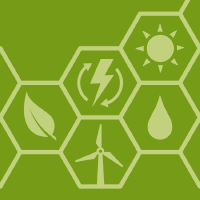Topic Menu
► Topic MenuTopic Editors

Thermoelectric Energy Harvesting
Topic Information
Dear Colleagues,
In order to meet the ever-increasing energy demands of our societies in a climate-friendly fashion, we must continue to develop the present energy harvesting and recycling systems while looking for new sustainable solutions. In this regard, the thermoelectric phenomenon can be exploited to convert the large amounts of waste heat generated in our fossil-fuel-based economy (factories, houses, automobiles, etc.) into useful electric power. However, the low efficiency and high cost of conventional thermoelectric materials, together with the poor production scalability of thermoelectric devices, have impeded their mass deployment thus far.
Using novel inorganic materials, nanomaterials, and their hybrids with conductive organic molecules/polymers in thin films or bulk forms has proven to be a promising approach towards enhancing the thermoelectric properties of traditional materials and improving the efficiency of thermoelectric devices. However, the development of novel alloys and composites and the implementation of nanomaterials and organic semiconductors into large-sized real devices are major challenges. Crucial issues to be addressed include the materials’ chemical stability, toxicity, adaptability, scalability, flexibility, and mechanical robustness of the final devices. Toward this end, our Topic seeks to contribute to the thermoelectric energy-harvesting agenda through the most recent scientific and cross-disciplinary findings on thermoelectric materials and devices. We are inviting papers covering innovative scientific/technical developments, reviews, case studies, and analytical/assessment articles from all relevant disciplines.
Prof. Dr. Amir Pakdel
Dr. David Berthebaud
Topic Editors
Keywords
- Inorganic thermoelectric materials and composites
- Organic/polymeric thermoelectric materials
- Low-dimensional thermoelectric materials and nanostructured bulks
- Thermoelectric thin films
- Thermoelectric generators and coolers
- Flexible thermoelectric devices
- Simulation of novel thermoelectric systems
Participating Journals
| Journal Name | Impact Factor | CiteScore | Launched Year | First Decision (median) | APC | |
|---|---|---|---|---|---|---|

Energies
|
3.2 | 5.5 | 2008 | 16.1 Days | CHF 2600 | Submit |

Materials
|
3.4 | 5.2 | 2008 | 13.9 Days | CHF 2600 | Submit |

Applied Sciences
|
2.7 | 4.5 | 2011 | 16.9 Days | CHF 2400 | Submit |

Entropy
|
2.7 | 4.7 | 1999 | 20.8 Days | CHF 2600 | Submit |

Nanoenergy Advances
|
- | - | 2021 | 31 Days | CHF 1000 | Submit |

MDPI Topics is cooperating with Preprints.org and has built a direct connection between MDPI journals and Preprints.org. Authors are encouraged to enjoy the benefits by posting a preprint at Preprints.org prior to publication:
- Immediately share your ideas ahead of publication and establish your research priority;
- Protect your idea from being stolen with this time-stamped preprint article;
- Enhance the exposure and impact of your research;
- Receive feedback from your peers in advance;
- Have it indexed in Web of Science (Preprint Citation Index), Google Scholar, Crossref, SHARE, PrePubMed, Scilit and Europe PMC.


